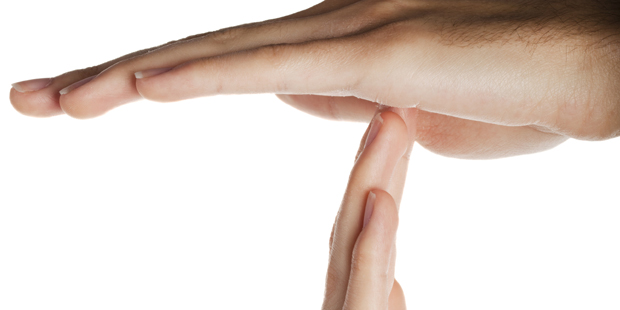
Branding Talk Isn’t Helping Your Company. Here’s What Should Replace It
Last week, WPP brought out its league table of the world’s most valuable brands. It values Apple at $183 billion and McDonald’s at $95 billion. Meanwhile, over at Omnicom’s Interbrand, they reckon that the Apple badge is worth a mere $33 billion, whereas McDonald’s is worth $35 billion. So who’s right? Neither of them. I don’t think that you can value brands, because they’re just a convenient fiction. Once they were a useful way of looking at the world. Now that such a massive industry has developed around them, they’re actually distorting the way companies do business. Is it time to stop talking about brands and branding altogether? I think we should all have a try.
“Essentially all models are wrong,” said George Pelham-Box, one of the most influential statisticians of the 20th century, “but some of them are useful.” Let’s remember that branding is only a model of the way that consumers think about products and services, so by definition, it’s wrong. But that doesn’t mean it’s not useful–so long as we don’t get carried away by imagining it’s the truth.

Was the Think Different campaign really a branding coup? Or just the outcome of deeper change?
Think of maps: A simple map pretends that the Earth is flat, and that’s fine for getting you across town. But if you try to navigate a plane across the Atlantic on that principle, you’re going to get a big surprise when you come in to land. (That’s why the route your long-haul flight takes looks like a curve on the seatback map.) All these “brand valuation” metrics are doing something similar: treating a flat earth theory as if it’s the truth. And they’re landing in the wrong place.
“BRANDS WERE, HE MAINTAINED, A BY-PRODUCT OF HAVING GREAT PRODUCTS.”
I used to work with Orange Telecom, a late-starter in the cellular market that became one of the biggest consumer brands in Europe. Hans Snook, its eccentric founder, would happily talk all day in his office about science fiction, colonic irrigation, or feng shui. Only one topic was taboo: the Orange brand. Brands were, he maintained, a by-product of having great products and communicating them well to people. Power stations that generate a lot of electricity probably have a lot of steam coming out of the chimneys. That doesn’t mean to say that the engineers stand around working out how to make more steam.
In his recent book, (excerpted recently on Co.Design), my old colleague Ken Segall describes Apple’s “Think Different” advertising campaign. But ask yourself: When was the last time Apple did a pure brand ad? Fifteen years ago? Apple went from a challenger to a leader when it stopped focusing on its brand and made its products the heroes of its communications. (“I’m a Mac, I’m a PC” were product ads. Trolls who beg to differ, please scroll down. I will be with you shortly.)
If you promise something clearly, deliver on that promise, and repeat the process, you build strong emotional links to your company with certain consumers. But that’s where the value resides: in my head and your head, and your mother’s head. And the stuff inside my head is my property.
If brands exist at all, they exist in the minds of consumers. I can switch my brand of search engine at a moment’s notice. Bank accounts and makes of automobile are a bit more hassle to discard, but I can still change my mind about them. But that’s not how brand valuation models see them. They act as if our thoughts are a company’s property, like a factory, or a warehouse full of boxes. The brand model, once a wrong but useful way of looking at the world, has become the product. A study by Interbrand and JP Morgan concluded that brands account for about a third of the average public company’s valuation.

After so many years focusing on pure branding, Coca-Cola has embraced design thinking. Guess what? The brand is improving.
“THEY ACT AS IF OUR THOUGHTS ARE A COMPANY’S PROPERTY, LIKE A FACTORY, OR A WAREHOUSE FULL OF BOXES.”
Some smart people have begun a backlash against companies that seem to exist to build brands as an end in itself. Management guru Gary Hamel has repeatedly criticized Coca-Cola, accusing it of concentrating on shoring up the Coke brand at the expense of exploring new markets and keeping up with changing consumer tastes. As a result, Coke had to play expensive catch-up games as its market was squeezed by bottled water, new-age herbal drinks, smoothies, energy drinks, and iced tea. But when you’re Coca-Cola, and you’re told that your most valuable property is your brand, then you’re going to concentrate enormous energy into building it–even if that means that you ignore what customers actually want to drink.
In his excellent Obliquity, John Kay explains how the richest people are not those who set out to make money first and foremost, the most profitable companies don’t think too hard about their profits, and great discoveries are often made by people who are looking for something else altogether. Many of the world’s most valuable brands are created by people who don’t ever talk about branding.
So I’d like to propose an exercise where your company bans the word “brand” and the idea of brand building from your meetings for a month. Who knows what you might achieve in that time instead. You might even start to build a great brand.
Read more by Brian here.

Tags: Brand











